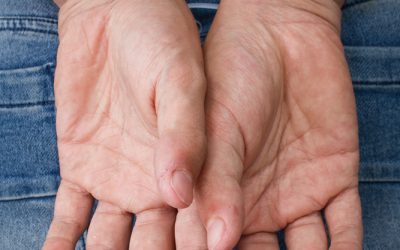PAWS After Alcohol: Timeline, Symptoms, and Coping Strategies
This turns a potentially overwhelming experience into a manageable one, alcohol withdrawal syndrome symptoms guiding you toward a healthier, alcohol-free future. This phenomenon, known as kindling, can make each subsequent attempt at quitting more challenging and potentially more dangerous. The length and intensity of alcohol use also plays a significant role.
- DTs can begin around 48 and 72 hours after a person stops drinking and may last for five to seven days.
- During sleep, the body and brain have the opportunity to repair and regenerate, which is essential for both physical and mental recovery.
- Older patients with a history of heavy alcohol use, a previous history of DTs, poor liver function and more severe withdrawal symptoms at the outset are more likely to experience DTs.
Introduction ‐ Medical Burden of Alcohol Abuse

Symptoms that have associations with this condition can be mild, severe, or in some cases, life threatening. This is where symptoms are usually the most severe, with some individuals displaying delirium tremens — hyperactive autonomic activity that can lead to cardiac collapse. Delirium tremens can last up to 5 days, with a mortality rate of up to 37%. This highlights the severity of the condition and the need for immediate medical attention. Symptoms of alcohol withdrawal can occur as early as a few hours after a person’s last drink.
What Happens If An Addict Stops Drinking Alcohol Suddenly?
People who have developed a dependence on alcohol experience uncomfortable physical and psychological symptoms when they discontinue alcohol use, which characterize alcohol withdrawal syndrome. People with moderate to severe alcohol use disorders should only undergo detox and withdrawal under the supervision of medical professionals. Around days two and three, many experience the most intense withdrawal signs. This is when 72-hour alcohol withdrawal symptoms can spike, including increased heart rate, elevated blood pressure, and potential hallucinations. Sober living house It’s common for individuals to feel shaky, restless, and extremely fatigued. During this timeframe, delirium tremens (DTs) may emerge in severe cases.
- You may reach a point where you start drinking again just to relieve your symptoms.
- Only a small percentage (approximately 5%) of individuals undergoing alcohol withdrawal will experience DTs.
- Informed by her personal journey to recovery and support of loved ones in sobriety, Jessica’s empathetic and authentic approach resonates deeply with the Addiction Help community.
- It creates a state of chronic, low-grade discomfort that the brain has been powerfully conditioned to “solve” with alcohol.
The Recovery Village Kansas City
These medications aren’t for everyone but could help lessen severe DT symptoms, such as hallucinations and aggression. If you’re given this type of medication, you’ll need to be closely monitored. Your doctor may decide to order different tests, such as blood work or a heart test. These results can help them learn how alcohol has affected your body and identify any infections, injuries, or other health issues that need treatment. Symptoms are often at their worst between 24 and 72 hours after you stop drinking. For women, heavy drinking means four or more drinks on any day or eight or more drinks per week.

Pain management techniques, such as mindfulness, acupuncture, or massage therapy, may provide relief for those experiencing increased pain sensitivity. A person’s overall physical and mental health, as well as their genetic makeup, can influence the severity and duration of PAWS. Those with pre-existing mental health conditions or a family history of addiction may be more susceptible to prolonged PAWS. Regular excessive alcohol consumption rapidly produces physical dependence that can be challenging to overcome.
The Recovery Village Atlanta
- As its name implies, severe stage 3 withdrawals are the most severe and include serious symptoms such as hallucinations, extreme disorientation, and seizures.
- Around days two and three, many experience the most intense withdrawal signs.
- Incorporate protein-rich foods, leafy greens, and whole grains into your daily meals.
- This guide will walk you through the different phases and what to expect at each stage.
Benzodiazepinesare often the first treatment doctors suggest for alcohol withdrawal. https://artqitechs.com/?p=6657 Behavioral treatment programs are helpful for people who want to quit drinking. These programs involve working with a team of mental health professionals in a group and individual setting. For 95% of respondents, withdrawal symptoms lasted for two to eight days.

Days 4-7: Finding Your Sea Legs Again
Anyone who finds it difficult to go a day without drinking or who experiences mild withdrawal symptoms when trying to quit should consult a medical professional. Early recognition and intervention can prevent more severe dependence and withdrawal. Alcohol withdrawal is a challenging yet manageable process with the right knowledge and support. From the onset of symptoms to the long-term recovery timeline, understanding what to expect can make a significant difference. Recognizing the importance of professional help, knowing the progression of symptoms, and being aware of the risks and complications are all crucial steps toward a successful recovery.